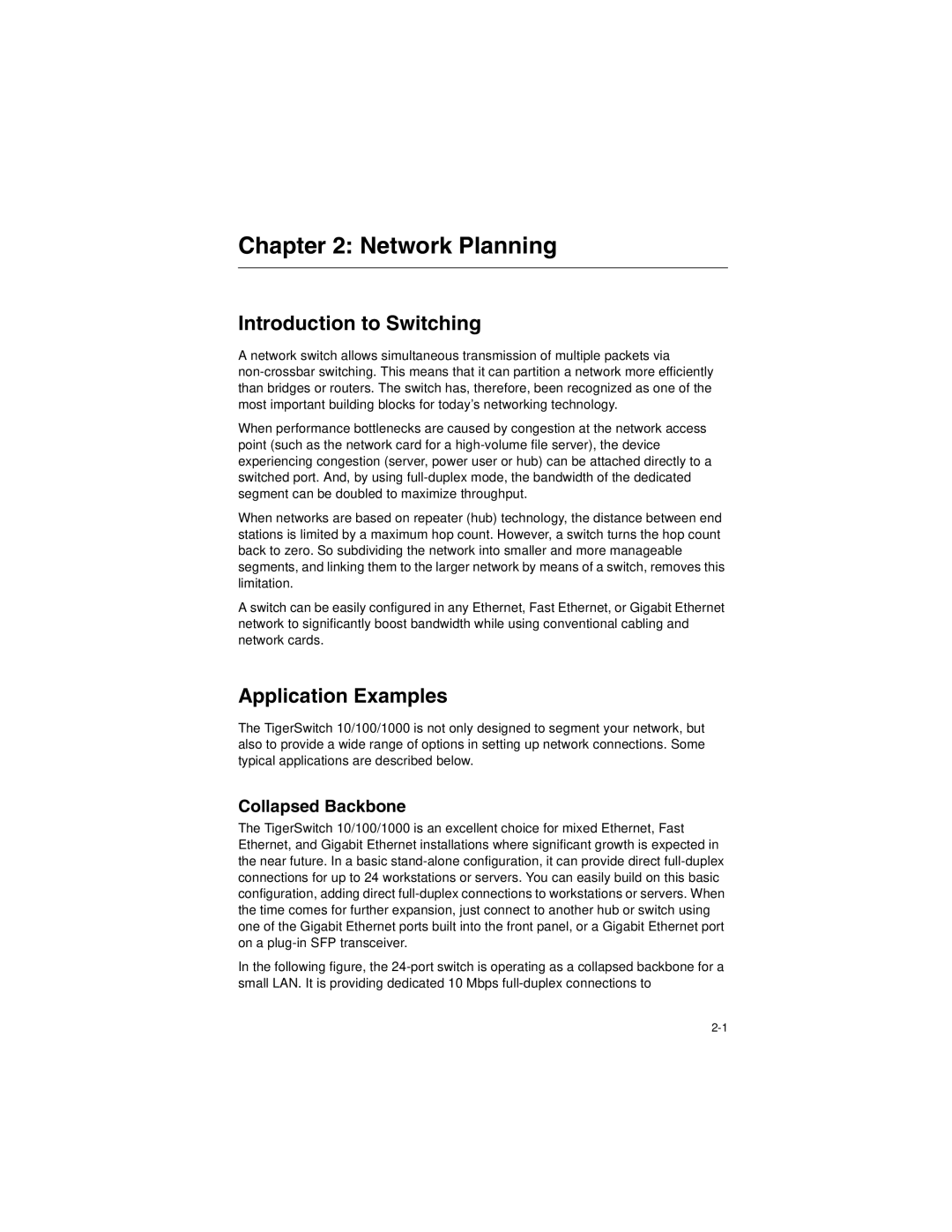Chapter 2: Network Planning
Introduction to Switching
A network switch allows simultaneous transmission of multiple packets via
When performance bottlenecks are caused by congestion at the network access point (such as the network card for a
When networks are based on repeater (hub) technology, the distance between end stations is limited by a maximum hop count. However, a switch turns the hop count back to zero. So subdividing the network into smaller and more manageable segments, and linking them to the larger network by means of a switch, removes this limitation.
A switch can be easily configured in any Ethernet, Fast Ethernet, or Gigabit Ethernet network to significantly boost bandwidth while using conventional cabling and network cards.
Application Examples
The TigerSwitch 10/100/1000 is not only designed to segment your network, but also to provide a wide range of options in setting up network connections. Some typical applications are described below.
Collapsed Backbone
The TigerSwitch 10/100/1000 is an excellent choice for mixed Ethernet, Fast Ethernet, and Gigabit Ethernet installations where significant growth is expected in the near future. In a basic
In the following figure, the
